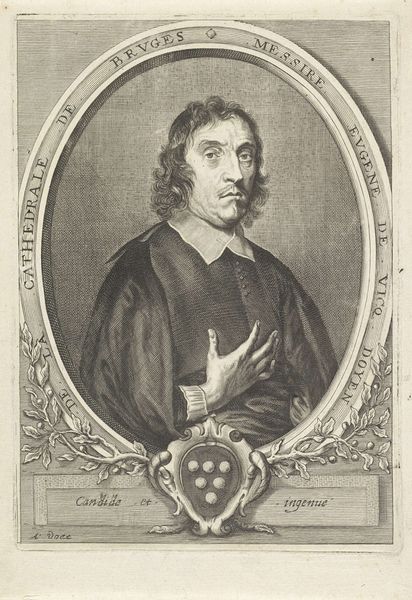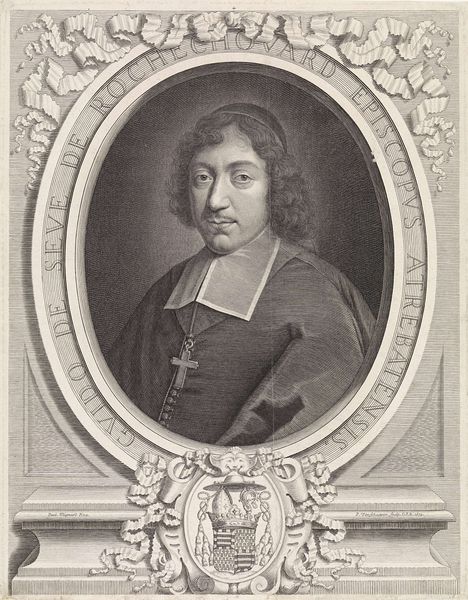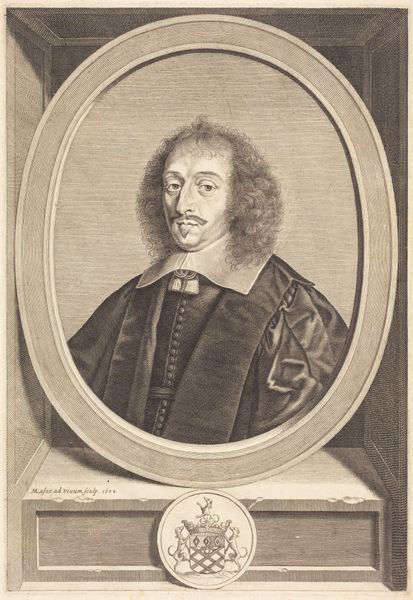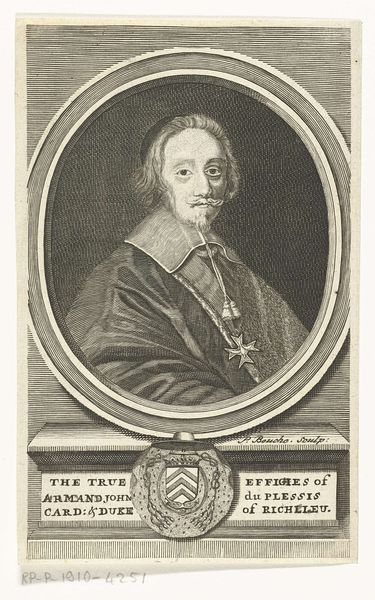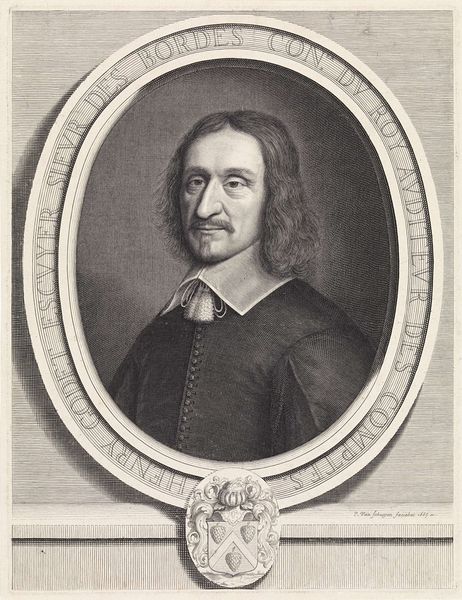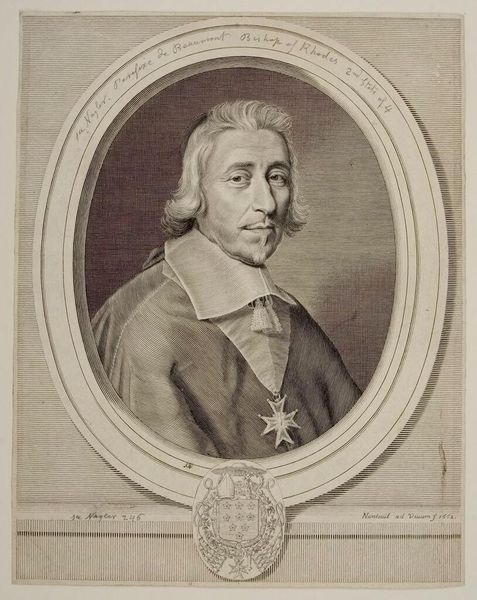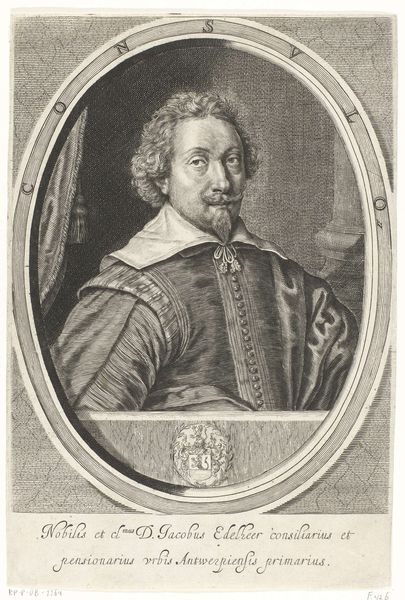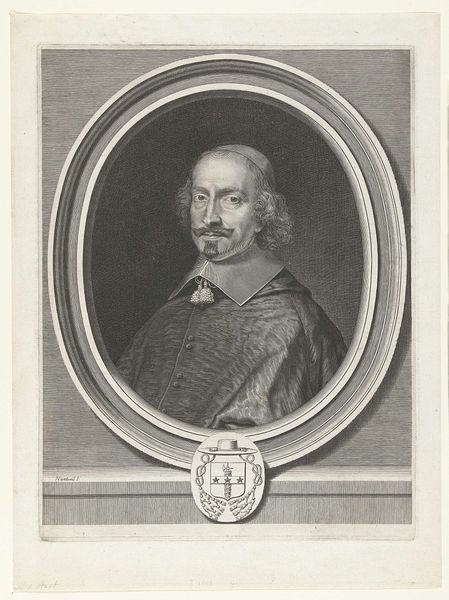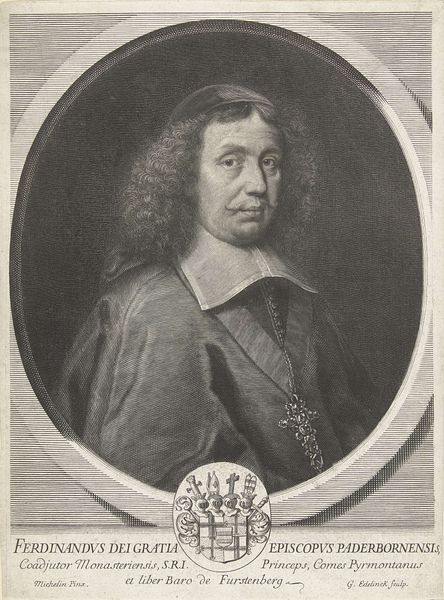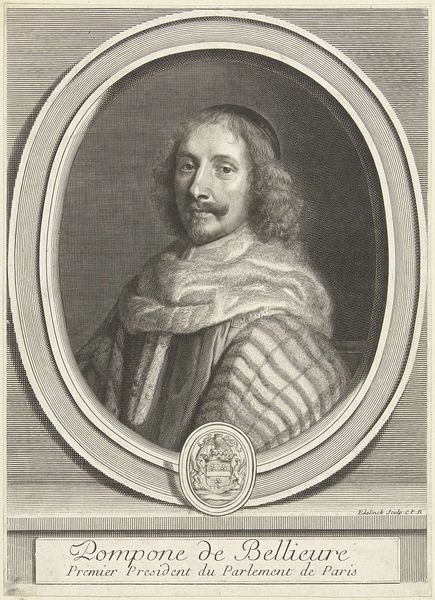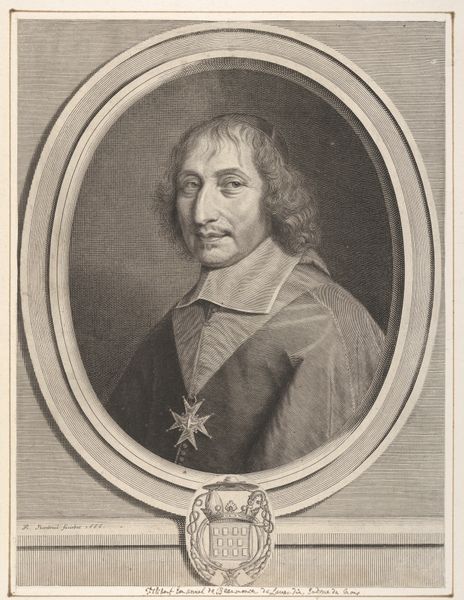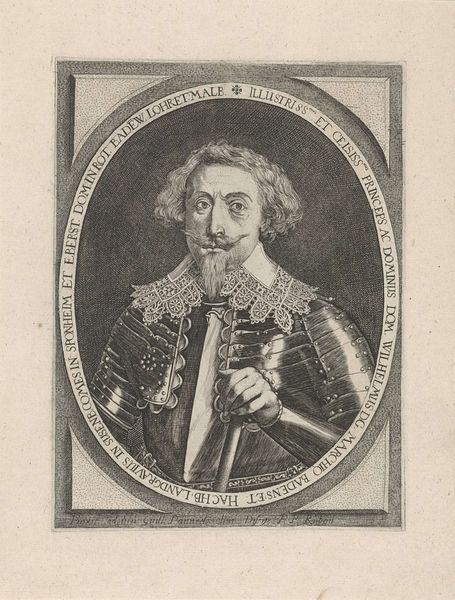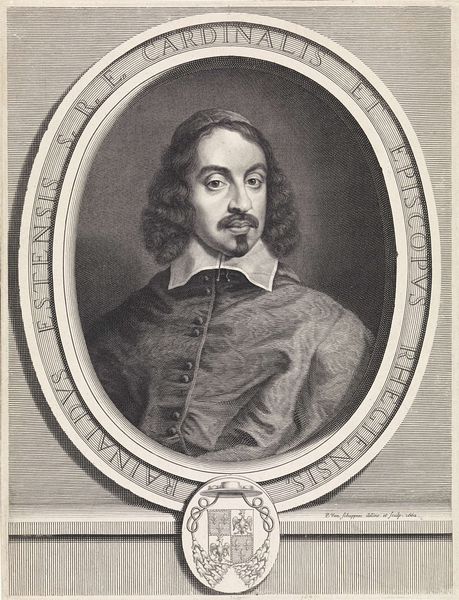
print, engraving
#
portrait
#
baroque
# print
#
old engraving style
#
historical photography
#
history-painting
#
engraving
Dimensions: height 244 mm, width 183 mm
Copyright: Rijks Museum: Open Domain
Curator: This is a print by Gérard Edelinck, "Portret van Philippe Collot," dating somewhere between 1666 and 1707. It resides here at the Rijksmuseum. It is an engraving that showcases a history painting of Philippe Collot, Operator for Stone Extraction. Editor: It’s remarkable how stark the light is in this portrait; it almost seems to dissect his face, highlighting every minute detail. The composition is rather static; I can't say that it offers a deep or complex reading. Curator: These portrait engravings were often commissioned as signs of status. Edelinck was very successful making artwork of famous men and influential people. The style fits right in with the late Baroque of Louis XIV's France, especially the attention to details. Editor: Interesting that you point to status and influence! I wonder about Collot. A lithotomist, apparently? How much agency did someone like him have versus the grand figureheads who usually dominated historical portraiture? And to what extent did Edelinck give this man the tools to enter powerful circles? Curator: Edelinck made quite a career capturing such individuals, not only through this technique but as prints were easily shared across great distances, creating instant recognition of men like Philippe Collot. Editor: So, access. This engraving allowed a type of dissemination and celebrity, and probably shaped ideas of him among his peers as well. It’s no photograph, but still presents a compelling sense of “realness”. How do you think Edelinck managed that effect? Curator: His training gave him amazing precision in depicting skin, hair and textures of fabrics with those subtle gradations. Edelinck's meticulous work provided Collot and other important figures a presence and gravity during that period in France. He did make an appealing portrait of a man with stone extracting skills. Editor: Looking at this now, I keep thinking of the relationship between knowledge and representation. By portraying Collot in this way, Edelinck wasn't just documenting an individual. The artist helped write an era’s understanding of status, intellect, and skill. Thanks for illuminating this portrait! Curator: Thank you! Exploring the impact of portraiture through historical eras is incredibly valuable.
Comments
No comments
Be the first to comment and join the conversation on the ultimate creative platform.
